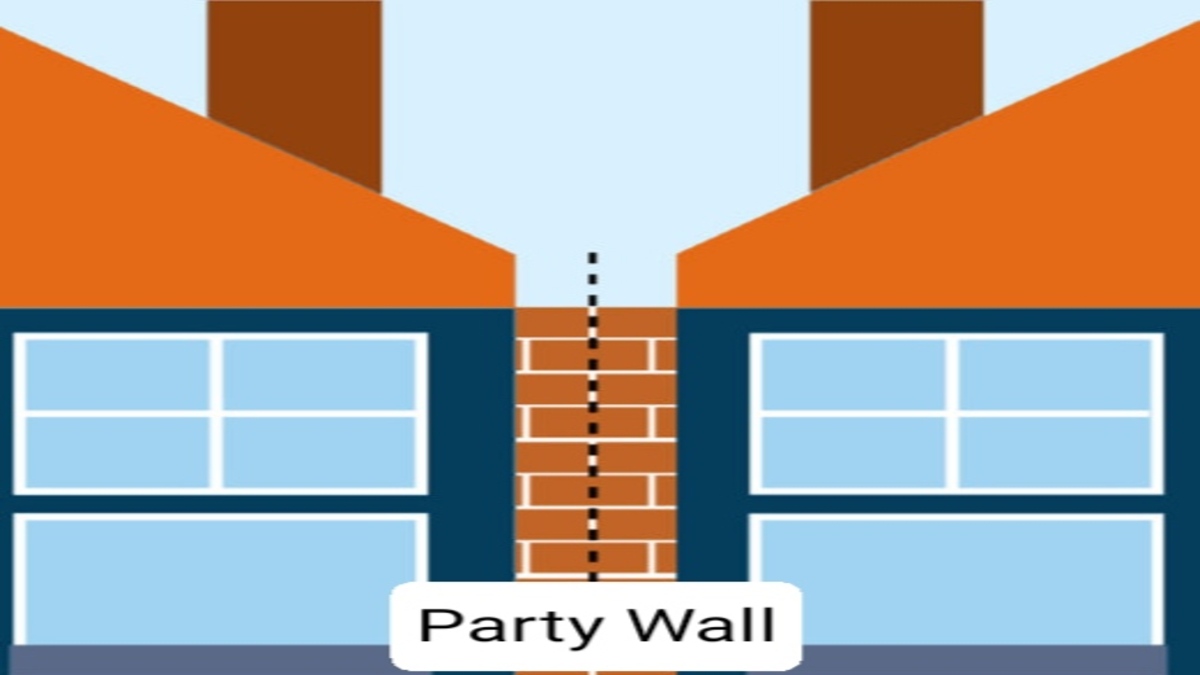Table of Contents
What Is Party Wall?
A party wall is a special kind of wall that is shared between two houses or buildings that are owned by different people.
There are different ways that people can own this kind of wall. Sometimes they share it equally, other times they divide it in half and each own their own part.
Sometimes one person owns it, but the other person has permission to use it too. But usually, the wallll is owned equally by both people unless they have proof that it’s owned differently.
Explanation
A party wall is a particular type of wall shared by two or more houses, offices or apartments. It is designed to separate spaces so that each person can have their own space. Party walls can be made of different materials such as brick, wood or concrete.
Party walls are very important because they help ensure the safety and comfort of people who live or work in different units. For example, if someone is making a lot of noise in their apartment, a party wall helps reduce the amount of noise their neighbors can hear.
In some places there are rules that specify how party walls should be constructed. These rules ensure that the walls are strong and secure. Sometimes party walls need to be made of special fire-resistant materials, which means they won’t catch fire easily.
If a fire breaks out in one unit, the party wall prevents the fire from spreading to other units. This is very important as it helps to keep everyone safe and prevent property damage.
When a person owns a house or apartment that shares a party wall with another unit, they have what is called an easement. This means that they are allowed to use the wall as support, but own half of it. The other half belongs to the other owner.
Party walls are special walls that separate the different units of a building. They help keep people safe and comfortable and are built to regulations to ensure they are strong and safe.
Purpose Of Party Wall
It is the purpose of party walls to serve as shared walls between two adjoining buildings or units in residential construction. The aim of party walls is to provide structural support for both spaces and act as safety barriers in case of fire.
One purpose of party walls is to be load-bearing, supporting the weight of the floor and walls stacked on top of them throughout the height of the building. The aim of this function is to ensure the stability and safety of both buildings or units.
Another purpose of party walls is to serve as safety barriers in case of fire. The aim of building codes requiring party walls to have a fire rating of at least two hours is to prevent the spread of flames to the adjacent space for a minimum of two hours. This is typically achieved by using materials like two layers of ⅝-inch drywall, or a typical block or concrete wall.
Aim of party walls are to play an important role in ensuring the safety and stability of buildings and units that share a common wall.
Party Wall Agreement
Sometimes, two people own and take care of the same wall. A party wall agreement is like a promise to make sure both people are fair and kind to each other about the wall. The agreement talks about who is responsible for taking care of the wall, what will happen if the wall gets damaged, and how loud people can be around the wall.
The agreement might also talk about changes people want to make to the wall. They might have to ask permission from the other person before doing anything. Even if there is no agreement, they still need to ask before making changes to the wall. If the other person says no, they can ask someone else to help them figure it out.
It is important to be nice to each other and follow the rules so that everyone can be happy. The agreement is like a promise to be kind and take care of the wall.
Advantages of party walls:
- Shared maintenance costs
- Practical architectural advantage
- Structural stability
Disadvantages of party walls:
- Approval required for alterations
- Financial constraints
- Noise and odor issues

